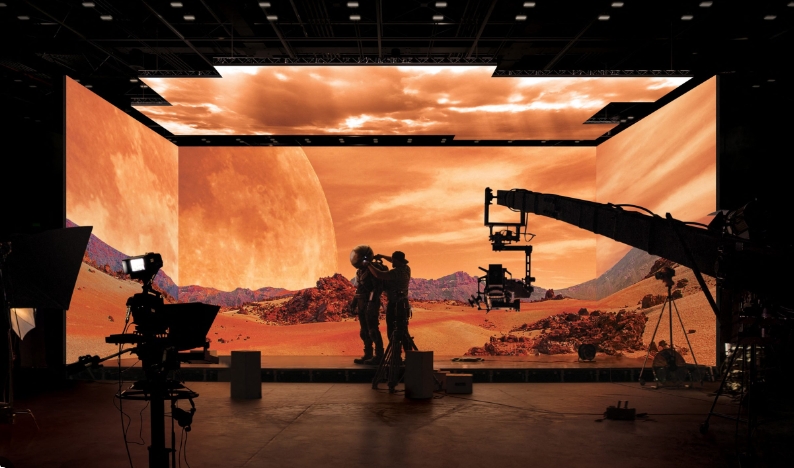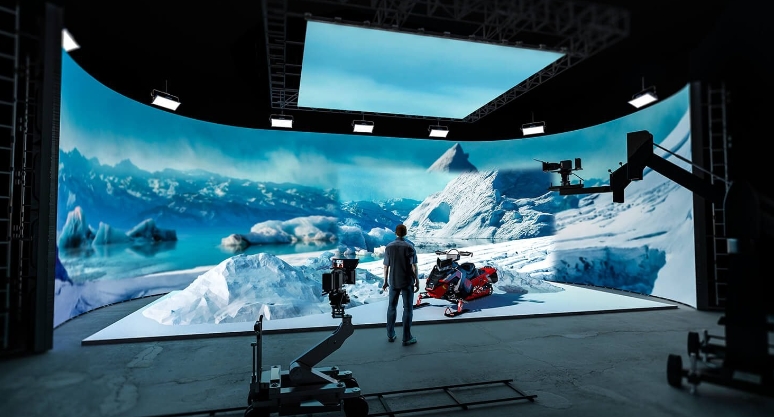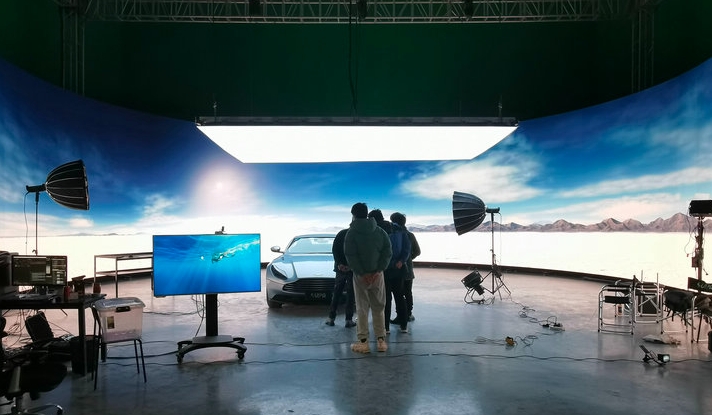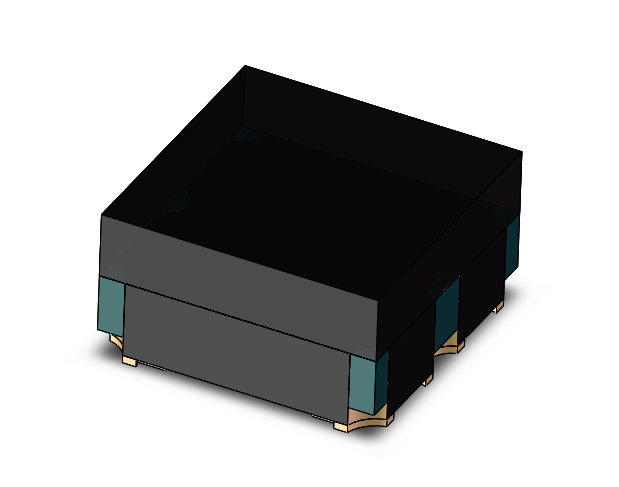LED for virtual production, also known as LED stage or LED volume, is an innovative technology that combines LED displays, real-time computer graphics, and camera tracking to create immersive virtual environments for film, television, and other visual productions. It allows filmmakers to capture scenes in a controlled digital environment, offering flexibility, efficiency, and cost savings compared to traditional on-location shoots or green screen setups.

Here’s an overview of how LED for virtual production works.
A large LED display or a series of LED panels is configured in a specific arrangement, such as a curved backdrop or a complete enclosed volume. These LED displays serve as the backdrop or walls of the virtual environment.
Computer-generated virtual environments, 3D models, or backgrounds are rendered in real-time using specialized software and powerful graphics processing units (GPUs). The virtual content is composited with the live-action footage or actors in real-time.
The camera used to capture the scene is equipped with tracking sensors or markers that allow for precise tracking of its position and orientation in 3D space. This tracking data is fed into the rendering system to ensure accurate alignment of the virtual content with the camera’s viewpoint.
The real-time rendering system combines the live camera footage with the virtual content and projects it onto the LED display. The LED display functions as a dynamic backdrop, displaying the virtual environment as seen through the camera’s perspective.
The LED display emits light that interacts with the actors and the physical objects on the set, creating realistic reflections, shadows, and lighting conditions. This integration of virtual and real lighting enhances the visual coherence and realism of the scene.
Directors, cinematographers, and visual effects artists can make real-time adjustments to the virtual environment, lighting, and camera settings on set. They can preview the final look of the scene immediately, making it easier to iterate and achieve the desired visual aesthetics.

The benefits of LED for virtual production include:
The immersive LED backdrop provides realistic lighting and reflections, improving the integration of virtual and real elements in the scene.
LED virtual production reduces the need for extensive location scouting, physical set construction, and post-production visual effects work. It can streamline the production process and reduce overall costs.
The real-time rendering and adjustment capabilities allow for creative exploration and experimentation during the shooting process. Directors and cinematographers can make instant changes to the virtual environment based on their vision.
virtual production enables real-time collaboration between the different departments, such as camera, lighting, and visual effects, leading to a more efficient and streamlined production workflow.
With virtual production, filmmakers can achieve consistent lighting and visual effects across multiple shots or scenes, ensuring continuity throughout the production.
LED for virtual production has gained significant popularity in recent years, particularly with the success of films and TV shows that have utilized this technology. It has revolutionized the way virtual environments are created and integrated into live-action productions, offering new possibilities for storytelling and visual aesthetics.

When it comes to the LEDs for virtual production displays, there are specific considerations to ensure optimal performance and create immersive virtual environments. Here are important factors to look for in LEDs for virtual production displays:
LED panels are commonly used for virtual production displays. There are different panel types available, including Direct-View LED (also known as LED video walls) and MicroLEDs. Direct-View LED panels are often preferred due to their high brightness, color accuracy, and seamless modular design.
LEDs with high brightness levels are crucial for virtual production displays to ensure the virtual content remains visible and vibrant even in well-lit environments. Look for LEDs with high nits or candelas per square meter (cd/m²) ratings to ensure sufficient brightness.
Accurate color reproduction is essential for virtual production displays. LEDs should offer a wide color gamut, such as Rec. 709 or DCI-P3, to accurately display the virtual content. Look for LEDs with precise color calibration capabilities to achieve consistent and realistic color representation.
A smaller pixel pitch is preferred for virtual production displays as it allows for higher resolution and better image quality. Fine pixel pitch LEDs help create detailed virtual environments with seamless visuals and reduce the visibility of individual pixels.
LEDs with a high refresh rate are important to prevent motion blur and flickering when displaying fast-moving content. A higher refresh rate ensures smooth and fluid motion in the virtual environment, improving the overall visual experience.
LEDs with a wide viewing angle are desirable for virtual production displays. This ensures that the content remains visually consistent and accurate, regardless of the viewing position. Wide viewing angles allow for better immersion and engagement for both the actors and the audience.
LEDs used in virtual production displays should be reliable and durable to withstand the demands of a production environment. Look for LEDs from reputable manufacturers known for their quality and longevity.
Kinglight offers several LEDs for virtual production displays, including the 1212-XR, 1415-XR and the MC1515PRGBW-M1 LEDs.

Kinglight MC1515PRGBW-M1 LED for virtual production displays